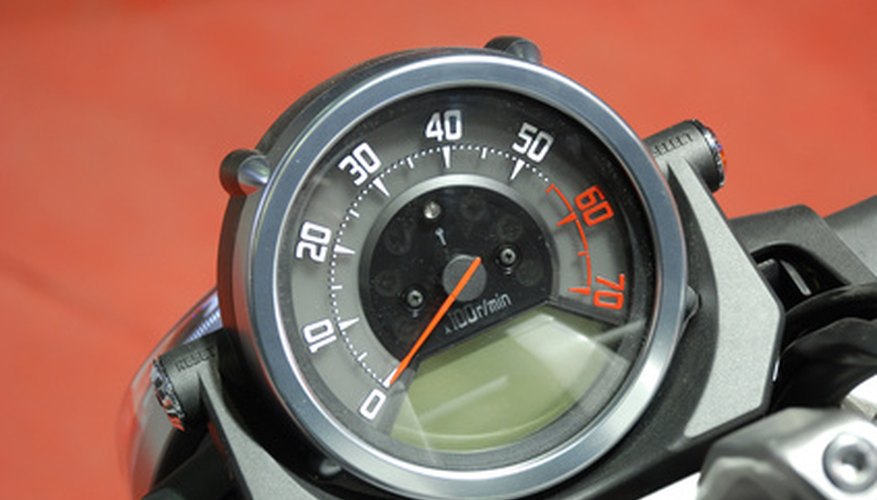A tachometer is a gauge for indicating the rotational speed of a car's engine. Traditional mechanical tachometers had an analogue needle to indicate engine RPM. Some modern electronic instruments also use an analogue needle rather than a digital display.
Mechanical Instruments
The operation of a mechanical tachometer is similar to that of a mechanical speedometer. A flexible cable with a rotating shaft connects a moving part in the engine or transmission to the gauge. Inside the instrument, the rotating shaft controls the position of a needle to indicate the engine speed.
- A tachometer is a gauge for indicating the rotational speed of a car's engine.
- Inside the instrument, the rotating shaft controls the position of a needle to indicate the engine speed.
Principle of Operation
The heart of a mechanical tachometer is an eddy current sensor that contains a movable magnet driven by the rotating input shaft. The spinning magnet in the sensor imparts a force on the indicator needle proportional to the engine speed, while a spring counteracts the sensor force.
Electronic Instruments
An electronic tachometer uses a magnetic pickup positioned near a rotating engine part to produce electrical pulses at a frequency proportional to the engine speed. Circuitry in the meter converts the pulse frequency for display of engine RPM using an analogue needle or a digital readout.
